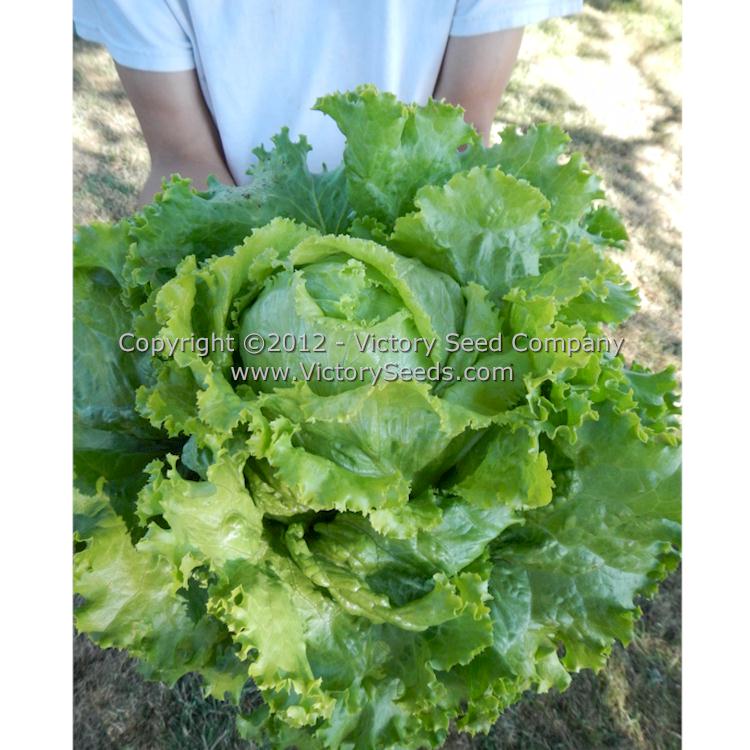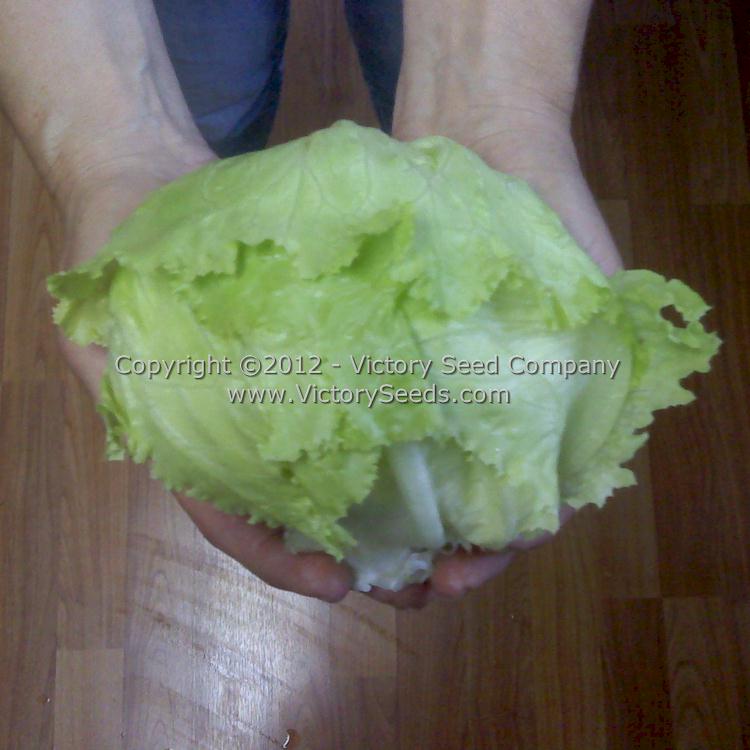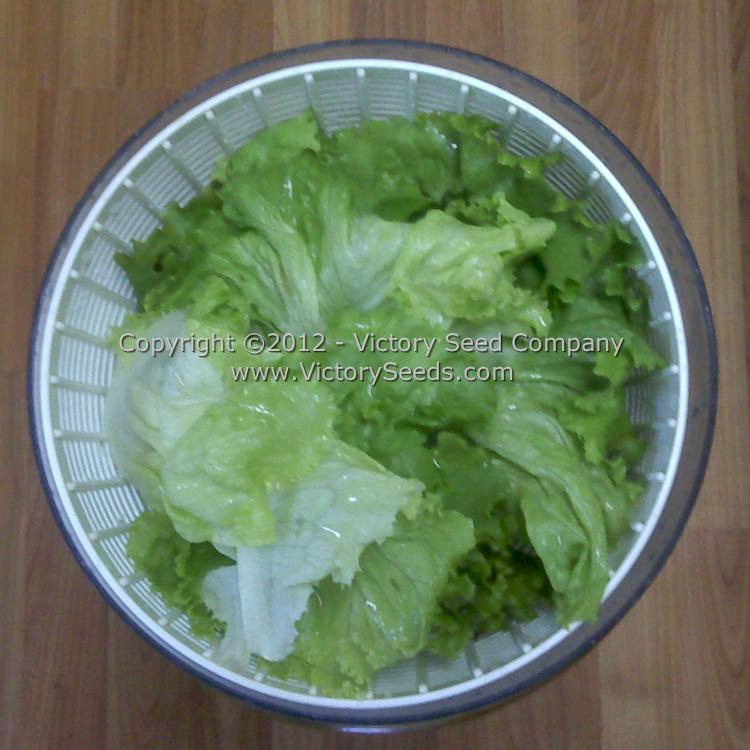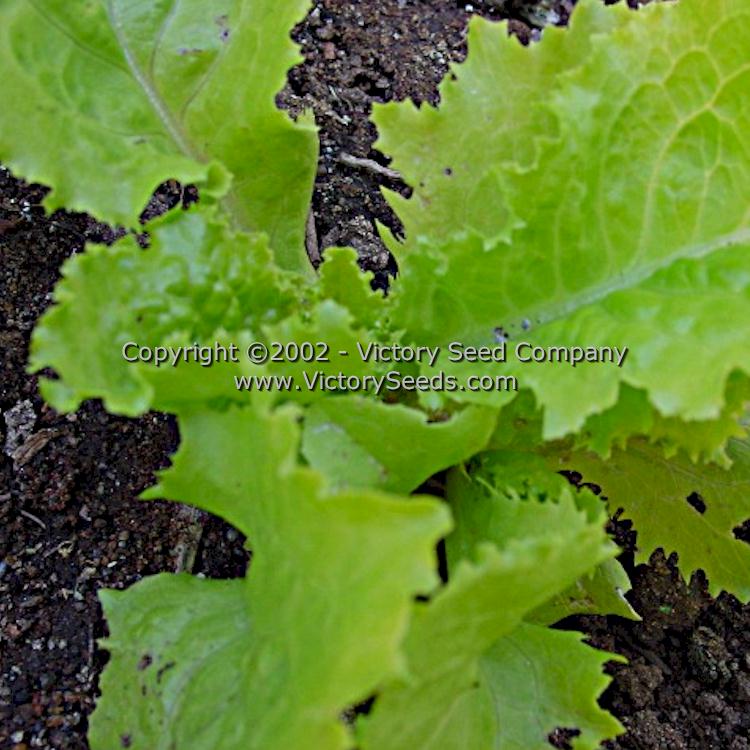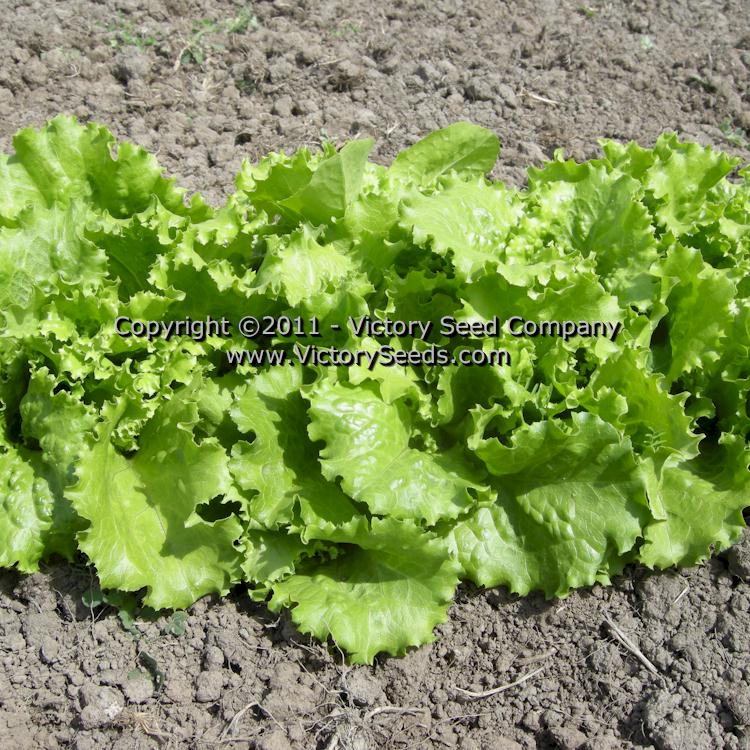Hanson Improved Head Lettuce
Hanson Improved Head Lettuce
Regular price
$2.95 USD
Regular price
Sale price
$2.95 USD
Unit price
per
Shipping calculated at checkout.
Couldn't load pickup availability
70 to 80 days — The heads of 'Hanson Improved' are large, yellowish-green with frilled leaves and white hearts. Like other head-type lettuce plants, you must thin your plantings so that the plants are not crowded allowing heads to develop. The thinned plants (culls) should not be wasted. They make a great salad as a leaf lettuce. Additionally, when the mature heads are harvested, we still find the outer leaves to be tasty and perfectly suited for salads . . . bonus food. When you buy head lettuce at the market, all you are getting are the hearts.
This lettuce is an old family heirloom originating with the Hanson family of Maryland who had been cultivating it, "... for over 70 years."[1] In 1870, Colonel George Hanson sent seeds to Henry A. Dreer, a seedsman in Philadelphia, who recognized its merit and quickly began offering seeds in a limited introduction in 1871[2] calling it simply, 'Hanson'.
By the early 1900s, it was being offered by 195 different seed merchants[3] around the country; many of whom chose to change its name, a common practice at the time. Some of its synonyms include, Dreer's Hanson, Maule's Hanson, Bruce's Nonpareil, Simon's Nonpareil, Nonpareil, Los Angeles Market, Montreal Market, Hamilton Market, Evans' Hamilton Market, Toronto Market, Toronto Gem, Mastodon, Excelsior, Gardener's Friend, Gardener's Favorite, and Improved Hanson.[3] Each packet contains one gram, which is approximately 500 to 600 seeds.
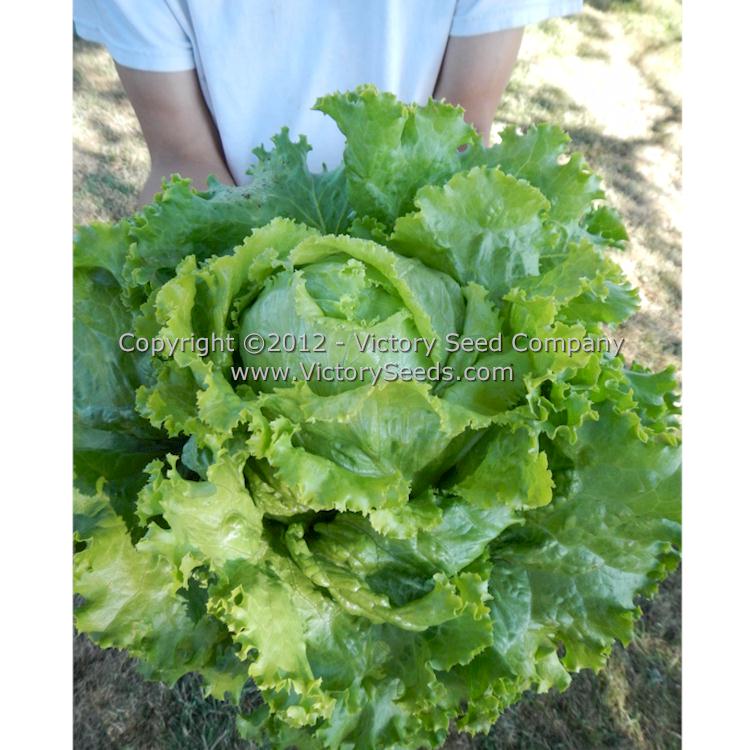
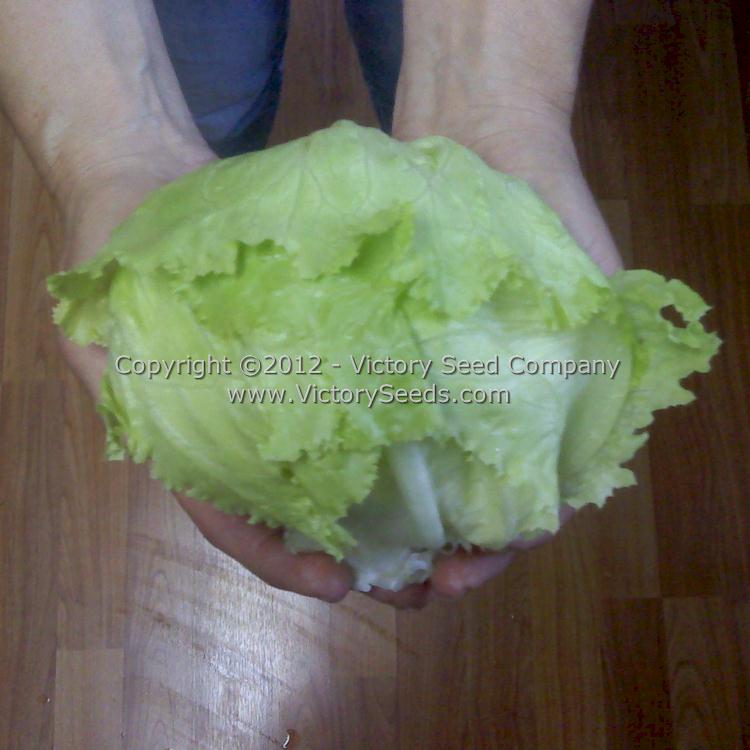
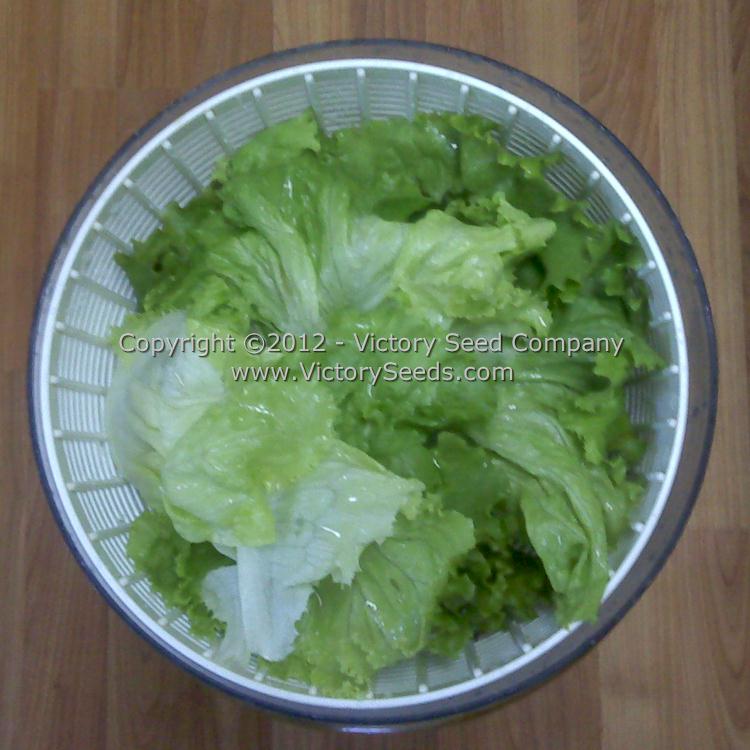
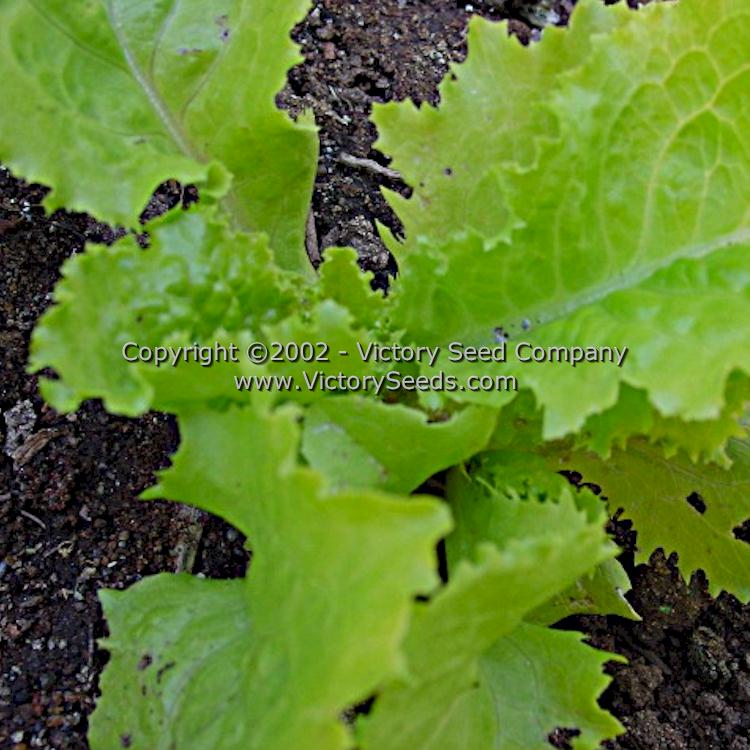
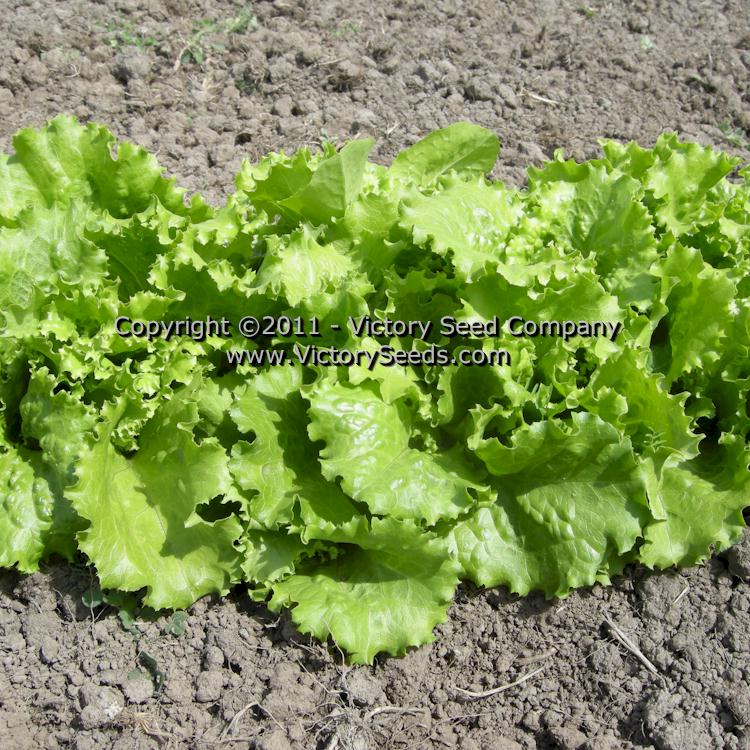
Planting Instructions: Lettuce and other greens thrive in cool spring and fall weather (50° F to 60° F). A few greens can handle summer heat, but most of them prefer the cooler temperatures of spring and fall. Most lettuce and greens can withstand occasional exposure to light frost but if very cold weather is coming, protect your plants with a frost cover.
Sowing: Prepare the seedbed outdoors using a hard tined rake, smoothening out the soil. Lightly sow and just barely cover the seeds with soil. Keep soil moist until germination is achieved. You can also start seeds indoors by sowing into seed starting trays using fresh new seed starting potting mix into clean seed starting trays. Just barely cover the seeds and keep well watered until they sprout. Harden off and transplant into the garden after about 3 weeks. Informational References:
Sowing: Prepare the seedbed outdoors using a hard tined rake, smoothening out the soil. Lightly sow and just barely cover the seeds with soil. Keep soil moist until germination is achieved. You can also start seeds indoors by sowing into seed starting trays using fresh new seed starting potting mix into clean seed starting trays. Just barely cover the seeds and keep well watered until they sprout. Harden off and transplant into the garden after about 3 weeks. Informational References:
- "Dreer's Garden Calendar for 1874," Henry A. Dreer, Seedsman and Florist, Philadelphia, Pennsylvania.
- "Dreer's Garden Calendar for 1872," Henry A. Dreer, Seedsman and Florist, Philadelpha, Pennsylvania.
- "American Varieties of Lettuce," by Tracy, William Woodbridge, United States Bureau of Plant Industry, Volume no. 69, pages 52-53, December 23, 1904.
Explore our vegetable collections:
[ Artichokes | Asparagus | Beans | Beets | Broccoli | Sorghums | Brussels Sprouts | Cabbage | Cantaloupe | Carrots | Cauliflower | Celery | Collard Greens | Corn | Cucumber | Eggplant | Endives | Gourds | Kale | Kohlrabi | Leeks | Lettuce | Mesclun Mix | Mustard Greens | Okra | Onions | Parsley | Edible Pod Peas | Garden Peas | South Peas | Hot Peppers | Mild Peppers | Pumpkins | Radishes | Rapini | Rhubarb | Salad Greens | Salsify | Summer Squash | Winter Squash | Swiss Chard | Tomatillo | Tomatoes | Dwarf Tomato Project | Turnips | Watermelons ]

